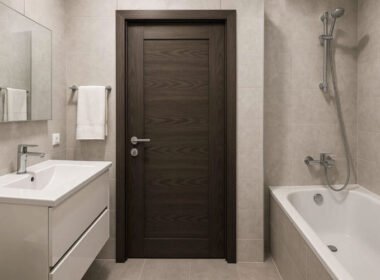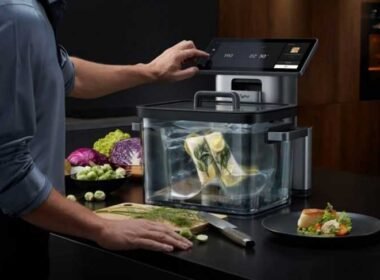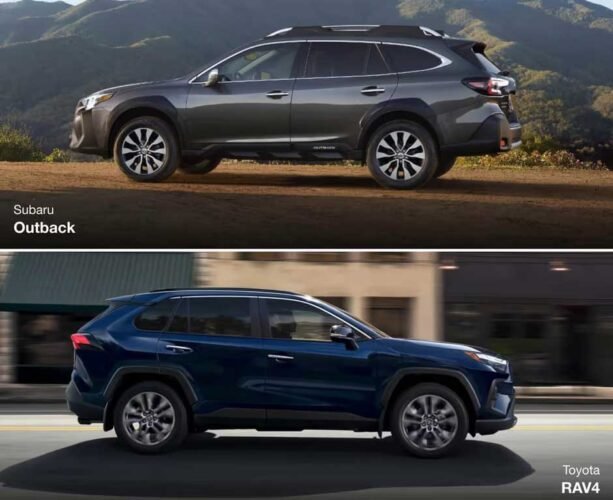When comparing compact SUVs that blend practicality, performance, and long-term value, the Toyota RAV4 and Subaru Outback often top the list. Both vehicles offer strong reputations for safety, comfort, and all-weather capability, but long-term ownership goes beyond first impressions. Two of the most crucial factors for car buyers are reliability and maintenance costs—what does it really cost to keep one of these vehicles running smoothly for years? Understanding the difference between Subaru Outback and Toyota RAV4 in terms of dependability and upkeep can help you make a smarter, more financially sound decision.
Toyota RAV4: A Reputation for Long-Term Reliability
The Toyota RAV4 has built a solid reputation over the years as one of the most dependable compact SUVs on the market. Toyota’s global reputation for reliability is strongly upheld by the RAV4, which consistently earns high ratings in consumer and industry reviews. According to data from J.D. Power and Consumer Reports, the RAV4 is typically rated above average or excellent for long-term reliability. This includes strong marks for engine durability, transmission performance, and electronic system dependability.
Subaru Outback: Dependable with a Few Quirks
The Subaru Outback is also known for reliability, especially in terms of safety systems and rugged performance. Subaru’s boxer engine and symmetrical all-wheel drive platform are engineered for long-term durability. However, the Outback has had occasional issues noted in earlier model years, including oil consumption concerns and minor electrical glitches. In recent years, Subaru has improved in quality rankings, and newer Outbacks are generally considered reliable, though not quite at the level of Toyota.
Maintenance Costs: RAV4’s Advantage in Affordability
One of the key strengths of the Toyota RAV4 is its low maintenance cost. According to RepairPal, the average annual maintenance and repair cost for a RAV4 is around $429 per year, which is below average for the compact SUV segment. Toyota’s widespread availability of affordable parts and a simple, efficient engine design contribute to its low cost of ownership. Routine services like oil changes, brake pad replacements, and tire rotations are cost-effective and easy to manage at any local service center.
Maintenance Costs: Outback Is Slightly Higher
The Subaru Outback’s average annual maintenance cost is approximately $631 per year, according to RepairPal. This is slightly above average for its class. One reason for the higher cost is the unique design of Subaru’s flat-four boxer engine, which may require more specialized service. In addition, all-wheel drive is standard on the Outback, which adds complexity to drivetrain servicing. While not overly expensive to maintain, it may require more attentive service compared to the RAV4.
Reliability of Powertrains
The RAV4 is powered by a reliable 2.5-liter four-cylinder engine that has remained consistent over recent generations. Toyota also offers a well-tested hybrid variant, which has proven to be one of the most reliable hybrid systems on the market. These engines are known for longevity, often reaching 200,000 miles or more with minimal issues.
The Subaru Outback offers a 2.5-liter flat-four engine and a more powerful 2.4-liter turbocharged option. While both engines offer solid performance, the flat-four can sometimes be more expensive to repair due to its unique layout. The turbocharged engine is newer and still proving itself in terms of long-term reliability, though early reviews suggest it performs well under regular maintenance.
Transmission Performance and Reliability
The Toyota RAV4 uses an 8-speed automatic transmission in its gas models and an electronically controlled continuously variable transmission (eCVT) in the hybrid models. Both systems have proven dependable, with few reported issues across multiple model years.
The Subaru Outback features a Lineartronic CVT (continuously variable transmission), which helps with fuel economy and smooth driving. While earlier versions of Subaru’s CVT had reliability concerns, especially before 2016, recent versions have improved significantly. Still, repairs or replacements of CVTs can be costly, so extended warranties may be worth considering for long-term peace of mind.
Brake, Suspension, and Tire Wear
The Toyota RAV4 typically has longer-lasting brake components and lower suspension repair frequency compared to competitors. Owners report fewer visits to service centers for wear-related suspension issues. In addition, the RAV4’s tires tend to wear evenly and predictably, which helps reduce unexpected expenses.
The Subaru Outback, with its standard all-wheel drive and higher ground clearance, handles rough terrain better but may experience more frequent suspension wear depending on use. Brake and tire wear are on par with the RAV4, though repairs may cost slightly more due to Subaru’s AWD complexity and less widely available parts.
Fuel Economy and Its Role in Ownership Cost
The RAV4 shines when it comes to fuel efficiency. The standard RAV4 achieves up to 28 mpg city / 35 mpg highway, while the hybrid version reaches up to 41 mpg city / 38 mpg highway, significantly reducing fuel expenses over time.
The Subaru Outback is also efficient, offering 26 mpg city / 32 mpg highway with the standard engine. The turbocharged version gets slightly less. While respectable, it can’t match the fuel economy of the RAV4, especially the hybrid. Over 5–10 years of ownership, this difference can add up to thousands of dollars in fuel savings in favor of the RAV4.
Warranty and Dealer Support
Both Toyota and Subaru offer similar basic warranties—3 years/36,000 miles limited warranty and 5 years/60,000 miles powertrain coverage. However, Toyota has a larger dealer network, making it easier to find service centers, especially in rural areas. The broader availability of OEM parts also helps keep Toyota maintenance costs down. Subaru dealerships provide quality support, but fewer in number, which could affect convenience and cost in certain areas.
Owner Satisfaction and Long-Term Loyalty
Toyota RAV4 owners consistently report high satisfaction levels, largely because of the low cost of ownership and excellent resale value. It’s one of the most traded-in vehicles by its own loyal customers. The Outback also has a loyal following, especially among those who live in regions with snowy or rugged terrain. Many Subaru owners value safety, all-weather capability, and ruggedness, though some mention higher repair costs as a downside.
Resale Value and Reliability Impact
Resale value is directly tied to long-term reliability. The RAV4 typically holds its value extremely well, thanks to Toyota’s reputation and the RAV4’s low operating costs. According to Kelley Blue Book, the RAV4 is one of the best in its class for resale after five years.
The Outback also maintains good resale value, especially in regions where all-wheel drive is highly valued. However, its value retention is slightly less consistent, in part due to occasional reliability concerns or the cost of AWD maintenance. Still, both vehicles perform well compared to other competitors in the segment.
Conclusion
When it comes to long-term reliability and maintenance costs. The Toyota RAV4 offers a lower cost of ownership, exceptional fuel economy, and a strong reputation for reliability that has been reinforced over decades. It’s a top choice for drivers seeking worry-free, budget-conscious ownership. The Subaru Outback, while slightly more expensive to maintain, provides rugged performance, standard all-wheel drive, and safety-focused engineering. Ultimately, your choice may depend on your driving needs and local climate, but from a purely reliability and maintenance standpoint, the RAV4 often edges out the competition for the most cost-effective experience.










